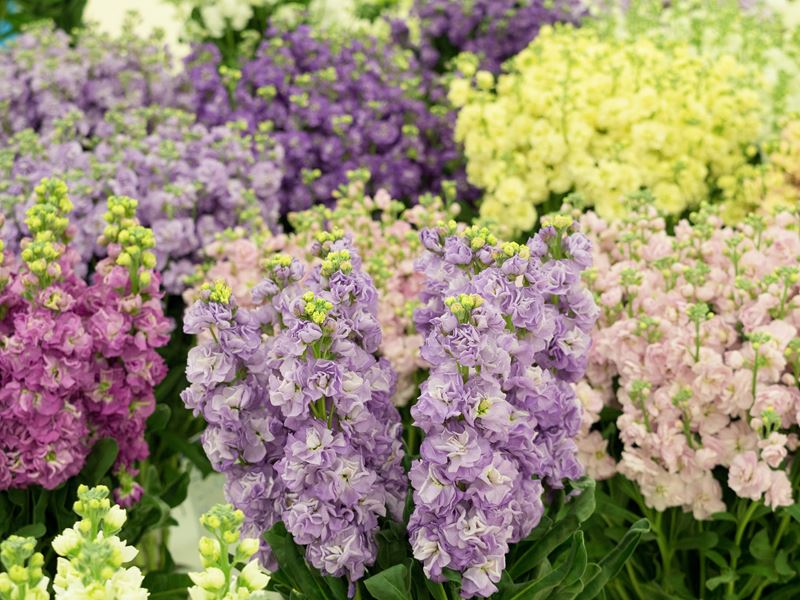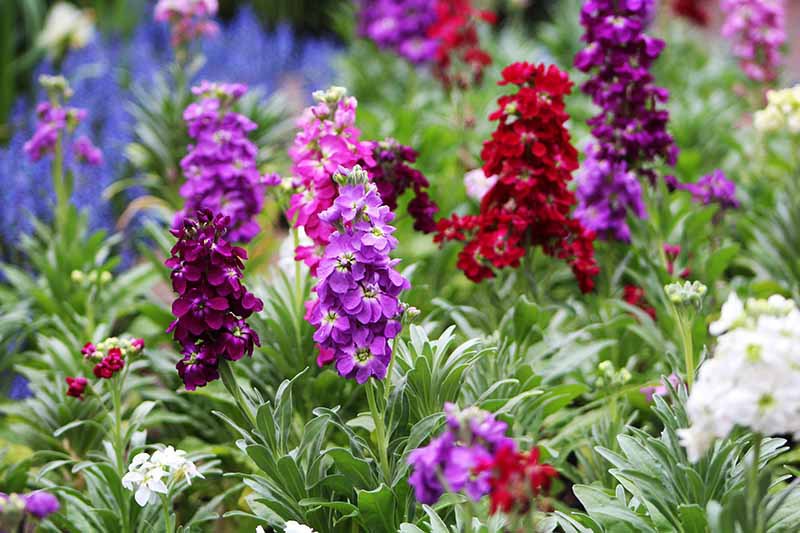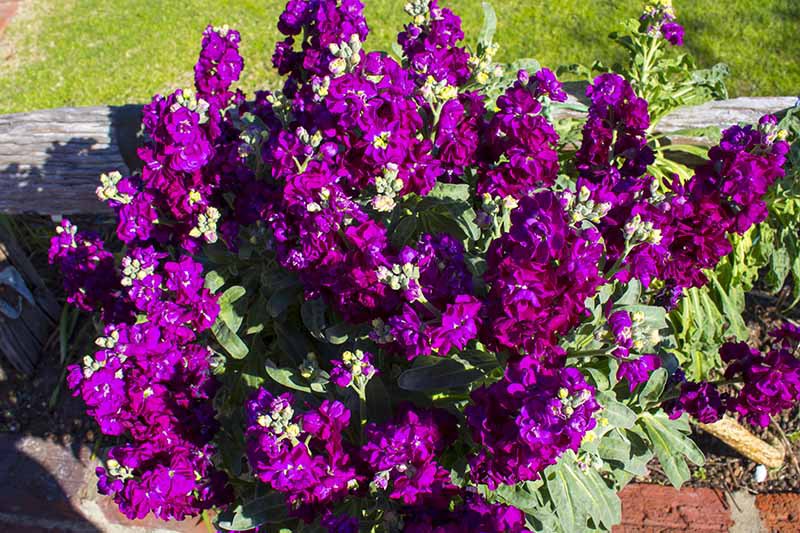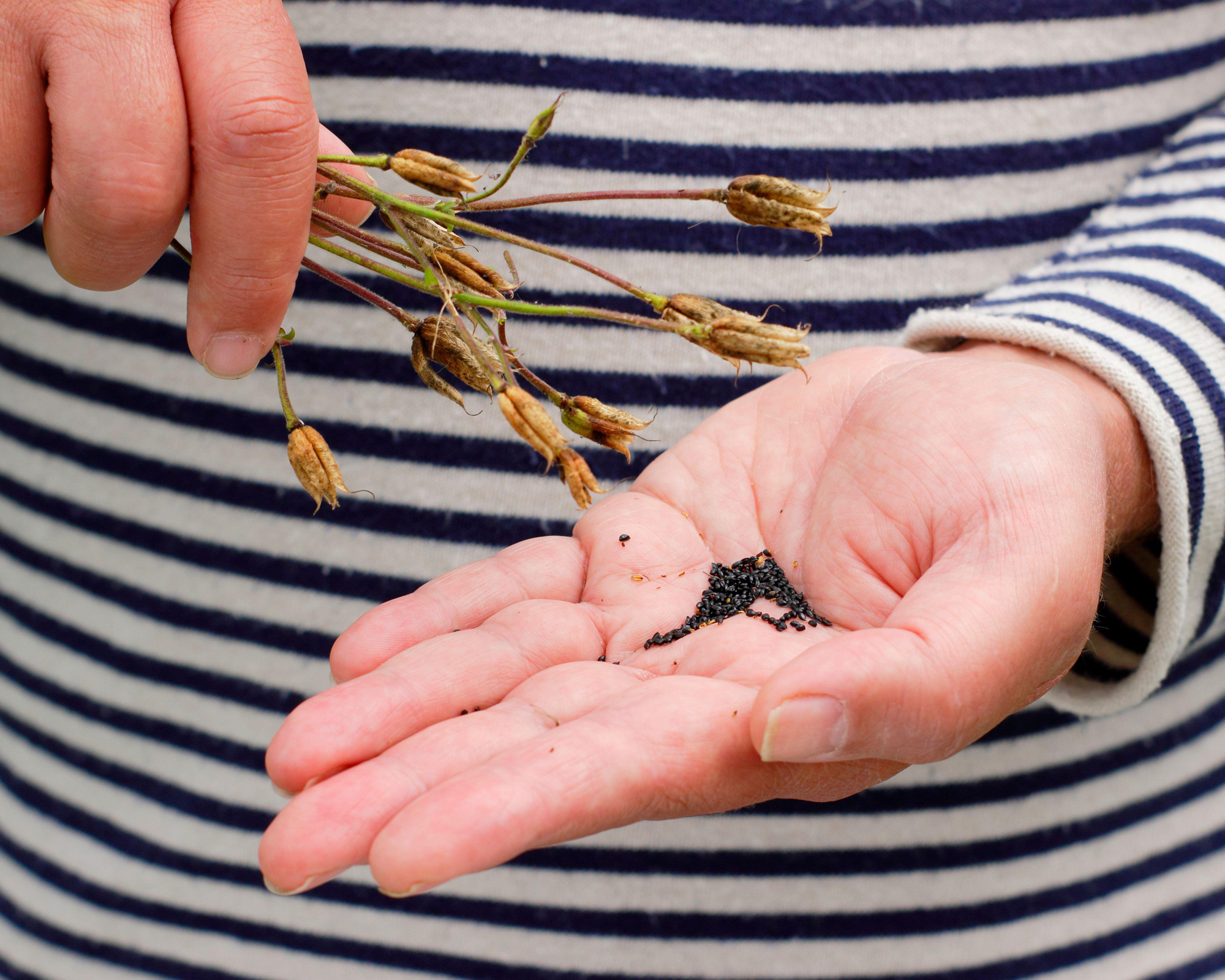What are Stock Flowers and How Do They Behave?
Stock flowers, also known as Matthiola incana, are a type of flowering plant that belongs to the Brassicaceae family. They are native to the Mediterranean region and are widely cultivated for their fragrant, showy blooms. Stock flowers are popular in gardens and floral arrangements due to their vibrant colors, delicate petals, and sweet fragrance. They are also a favorite among gardeners and flower enthusiasts because of their relatively low maintenance requirements and ability to thrive in a variety of conditions.
Stock flowers are annuals or biennials, meaning they complete their life cycle within a year or two. They typically grow to be around 1-3 feet tall and have a spread of around 1-2 feet. They have dark green, lance-shaped leaves and produce clusters of small, fragrant flowers in shades of pink, purple, white, and yellow. Stock flowers are often used in cut flower arrangements and are a popular choice for garden borders, containers, and hanging baskets.
Understanding the behavior of stock flowers is essential for gardeners and flower enthusiasts who want to encourage them to reseed themselves. Stock flowers are capable of producing a large number of seeds, which can be harvested and sown to produce new plants. However, the seeds require specific conditions to germinate and grow, and the plants need to be allowed to go to seed in order to produce viable seeds. By understanding the growth habits and requirements of stock flowers, gardeners can create an environment that fosters self-sowing and promotes healthy plant growth.
The question of whether stock flowers reseed themselves naturally is a common one among gardeners and flower enthusiasts. While stock flowers are capable of producing seeds, they often require specific conditions to germinate and grow. By understanding the factors that affect stock flower reseeding, gardeners can take steps to encourage self-sowing and promote healthy plant growth. In the next section, we will explore the answer to this question in more detail.
Do Stock Flowers Reseed Themselves Naturally?
Stock flowers are capable of reseeding themselves, but they require specific conditions to do so. In order for stock flowers to reseed themselves naturally, they need to be allowed to go to seed. This means that the flowers should be left on the plant to mature and produce seeds, rather than being cut off for use in floral arrangements or other purposes.
The conditions necessary for stock flower reseeding to occur include well-draining soil, adequate moisture, and sufficient sunlight. Stock flowers prefer full sun to partial shade and well-draining soil that is rich in organic matter. They also require consistent moisture, especially during the germination and seedling stages.
In addition to these conditions, stock flowers also require a period of cold temperatures to induce seed production. This is known as vernalization, and it is a process that helps to break seed dormancy and promote germination. In areas with mild winters, stock flowers may not receive enough cold temperatures to induce seed production, which can limit their ability to reseed themselves.
While stock flowers are capable of reseeding themselves naturally, they may not always do so successfully. Factors such as climate, soil type, and pest/disease presence can impact stock flower reseeding, and gardeners may need to take steps to mitigate these factors and promote healthy self-sowing. In the next section, we will explore some tips and advice for encouraging stock flowers to reseed themselves.
It’s worth noting that stock flowers can be a bit finicky when it comes to reseeding themselves. However, with the right conditions and care, they can be encouraged to produce seeds and propagate new plants. By understanding the conditions necessary for stock flower reseeding, gardeners can take steps to promote healthy self-sowing and enjoy the benefits of these beautiful and fragrant flowers.
How to Encourage Stock Flowers to Reseed Themselves
To encourage stock flowers to reseed themselves, it’s essential to create an environment that fosters self-sowing. One of the most critical factors is allowing the flowers to go to seed. This means resisting the temptation to deadhead the flowers, as this can prevent seed production. Instead, allow the flowers to mature and produce seeds, which will then disperse and germinate into new plants.
Providing adequate nutrients is also crucial for promoting healthy self-sowing in stock flowers. Use a balanced fertilizer that is high in phosphorus, as this will encourage root growth and seed production. Additionally, ensure that the soil is well-draining and rich in organic matter, as this will help to support healthy plant growth.
Maintaining optimal growing conditions is also essential for encouraging stock flowers to reseed themselves. Stock flowers prefer full sun to partial shade, so choose a location that receives at least six hours of direct sunlight per day. They also prefer well-draining soil and consistent moisture, so ensure that the soil is not too dry or too wet.
Another way to encourage stock flowers to reseed themselves is to provide support for the plants as they grow. Stock flowers can grow quite tall, so provide stakes or a trellis to help support the plants and keep them upright. This will also help to prevent the plants from becoming too leggy or sprawling.
Finally, consider using a technique called “companion planting” to encourage stock flowers to reseed themselves. Companion planting involves planting different plants together to improve growth and health. For example, planting stock flowers with marigolds or nasturtiums can help to deter pests and improve soil health, which can in turn promote healthy self-sowing.
By following these tips and creating an environment that fosters self-sowing, gardeners and flower enthusiasts can encourage stock flowers to reseed themselves and enjoy the benefits of these beautiful and fragrant flowers. Whether you’re looking to add some color and interest to your garden or simply want to enjoy the beauty of stock flowers, encouraging self-sowing is a great way to get the most out of these lovely plants.
Understanding the Life Cycle of Stock Flowers
The life cycle of stock flowers is a critical factor in understanding how to encourage self-sowing. Stock flowers are annuals or biennials, meaning they complete their life cycle within a year or two. The life cycle of stock flowers can be divided into several stages: germination, seedling growth, flowering, and seed production.
Germination typically occurs in the spring or fall, when the soil is cool and moist. Stock flower seeds germinate quickly, usually within 1-2 weeks, and the seedlings emerge with two small leaves. During the seedling stage, stock flowers require adequate moisture and nutrients to support healthy growth.
As the seedlings grow, they develop into mature plants that produce flowers. Stock flowers produce a profusion of small, fragrant blooms in shades of pink, purple, white, and yellow. The flowers are typically borne in clusters at the end of long stems, and they bloom for several weeks in the spring or summer.
After the flowers have bloomed, the plants produce seeds. Stock flower seeds are small and round, with a hard outer coat that protects the delicate inner seed. The seeds are produced in large quantities, and they can be harvested and sown to produce new plants.
Understanding the life cycle of stock flowers is essential for encouraging self-sowing. By allowing the plants to complete their life cycle and produce seeds, gardeners can promote healthy self-sowing and enjoy the benefits of these beautiful and fragrant flowers. Additionally, understanding the life cycle of stock flowers can help gardeners to identify potential problems and take steps to mitigate them.
For example, if stock flowers are not producing seeds, it may be due to a lack of adequate moisture or nutrients during the seedling stage. By providing the necessary care and attention, gardeners can promote healthy seed production and encourage self-sowing. By understanding the life cycle of stock flowers, gardeners can take a more informed and proactive approach to promoting healthy self-sowing and enjoying the beauty of these lovely plants.
Factors That Affect Stock Flower Reseeding
Several factors can impact stock flower reseeding, and understanding these factors is crucial for promoting healthy self-sowing. Climate, soil type, and pest/disease presence are some of the key factors that can affect stock flower reseeding.
Climate is a critical factor in stock flower reseeding. Stock flowers require a cool and moist climate to germinate and grow. In areas with hot and dry climates, stock flowers may struggle to reseed themselves. Gardeners can mitigate this by providing shade and adequate moisture to the plants.
Soil type is another important factor in stock flower reseeding. Stock flowers prefer well-draining soil that is rich in organic matter. In areas with heavy clay or sandy soils, stock flowers may struggle to reseed themselves. Gardeners can improve soil quality by adding organic matter such as compost or manure.
Pest and disease presence can also impact stock flower reseeding. Pests such as aphids and whiteflies can damage the plants and reduce seed production. Diseases such as powdery mildew and root rot can also impact stock flower reseeding. Gardeners can mitigate these factors by using integrated pest management techniques and practicing good garden hygiene.
Other factors that can impact stock flower reseeding include temperature, humidity, and light. Stock flowers require a certain level of temperature, humidity, and light to germinate and grow. Gardeners can provide optimal conditions for stock flower reseeding by understanding the specific requirements of the plants.
By understanding the factors that affect stock flower reseeding, gardeners can take steps to mitigate these factors and promote healthy self-sowing. This can include providing optimal growing conditions, using integrated pest management techniques, and practicing good garden hygiene. By taking these steps, gardeners can encourage stock flowers to reseed themselves and enjoy the benefits of these beautiful and fragrant flowers.
Popular Stock Flower Varieties and Their Reseeding Habits
There are several popular stock flower varieties that are known for their self-sowing tendencies. One of the most popular varieties is the ‘Ten Week Stock’ (Matthiola incana), which is a biennial that produces a profusion of small, fragrant flowers in shades of pink, purple, and white. This variety is known for its ability to reseed itself and is often used in gardens and floral arrangements.
Another popular variety is the ‘Night Scented Stock’ (Matthiola longipetala), which is an annual that produces a profusion of small, fragrant flowers in shades of pink, purple, and white. This variety is known for its ability to reseed itself and is often used in gardens and floral arrangements.
The ‘Giant Imperial Stock‘ (Matthiola incana) is another popular variety that is known for its self-sowing tendencies. This variety is a biennial that produces a profusion of large, fragrant flowers in shades of pink, purple, and white. It is often used in gardens and floral arrangements and is known for its ability to reseed itself.
When growing stock flowers, it’s essential to understand their growth habits and bloom times. Stock flowers typically bloom in the spring and summer, and they can be grown in a variety of conditions. They prefer well-draining soil and full sun to partial shade. By understanding the growth habits and bloom times of stock flowers, gardeners can provide the optimal conditions for self-sowing and enjoy the benefits of these beautiful and fragrant flowers.
In addition to these popular varieties, there are many other stock flower varieties that are known for their self-sowing tendencies. By choosing the right variety and providing the optimal conditions, gardeners can encourage stock flowers to reseed themselves and enjoy the benefits of these beautiful and fragrant flowers.
Tips for Collecting and Sowing Stock Flower Seeds
Collecting and sowing stock flower seeds can be a rewarding experience, especially when done correctly. To collect stock flower seeds, wait until the flowers have bloomed and the seed pods have formed. The seed pods will turn brown and dry, indicating that the seeds are ready to be harvested.
Remove the seed pods from the plant and place them in a paper bag or envelope. Allow the seeds to dry completely, which can take several days to a week. Once the seeds are dry, remove them from the seed pods and store them in an airtight container.
When sowing stock flower seeds, choose a location with well-draining soil and full sun to partial shade. Sow the seeds in the fall or early spring, about 1/8 inch deep and 1-2 inches apart. Water the soil gently but thoroughly, and keep the soil consistently moist during the germination period.
The optimal conditions for germination are a temperature of around 70-80°F (21-27°C) and high humidity. Keep the soil moist but not waterlogged, as this can lead to rot and poor germination.
It’s also important to note that stock flower seeds can be sensitive to light, so it’s best to sow them in a location that receives partial shade. This will help to prevent the seeds from becoming scorched or damaged.
By following these tips and providing the optimal conditions, gardeners can successfully collect and sow stock flower seeds, and enjoy the beauty and fragrance of these lovely flowers.
Common Mistakes to Avoid When Trying to Get Stock Flowers to Reseed
When trying to get stock flowers to reseed themselves, there are several common mistakes that can hinder the process. One of the most common mistakes is over-pruning, which can prevent the flowers from going to seed. Stock flowers need to be allowed to bloom and produce seeds in order to reseed themselves, so it’s essential to avoid pruning them too heavily.
Another common mistake is inadequate soil preparation. Stock flowers require well-draining soil that is rich in organic matter in order to reseed themselves. If the soil is too dense or lacks nutrients, the flowers may not be able to produce seeds. To avoid this mistake, make sure to prepare the soil properly before planting stock flowers.
Insufficient moisture is another common mistake that can hinder stock flower reseeding. Stock flowers require consistent moisture in order to produce seeds, so it’s essential to keep the soil consistently moist during the growing season. Avoid letting the soil dry out completely, as this can prevent the flowers from producing seeds.
Other common mistakes that can hinder stock flower reseeding include inadequate sunlight, poor air circulation, and pest/disease presence. To avoid these mistakes, make sure to provide stock flowers with full sun to partial shade, good air circulation, and protection from pests and diseases.
By avoiding these common mistakes, gardeners can promote successful self-sowing in stock flowers and enjoy the beauty and fragrance of these lovely flowers. Remember to provide stock flowers with the right conditions, including well-draining soil, consistent moisture, and full sun to partial shade, and avoid over-pruning, inadequate soil preparation, and insufficient moisture.



:max_bytes(150000):strip_icc()/stock-flowers-growing-guide-5189057-hero-b4ffebaa3bfa4918b436854abf6a8fa8.jpg)


/Stocksy_txp6cd4f9ecNjO100_Medium_937440-58bdedb83df78c353cdd8a02.jpg)


:max_bytes(150000):strip_icc()/GettyImages-1308101002stockflowerPhotosfromJapanAsiaandotheoftheworld-cb3ba844d8924e90b53787e62ef6ac9b.jpg)